Morocco
In the heart of Morocco lies a tapestry of architectural marvels, weaving together centuries of tradition, culture, and history with the demands of modernity.
In the historic city of Rabat, Morocco's architectural legacy can be felt as you walk the narrow streets of the old medina.
Buildings here can be traced back to ancient civilizations - the Phoenicians, Carthaginians and Romans.
"Morocco, thanks to its strategic position, has known several civilizations which passed through Morocco such as the Roman civilization, the Muslims, the Arab-Islamic civilizations, the Spanish-Moresque, all these civilizations have left traces, buildings and very interesting constructions in Morocco which result in traditional fabrics like the medina composed with monuments but also houses," explains Mohammed Krombi, curator of historical monuments at the Moroccan Ministry of Culture in Rabat.
Many of the more modern buildings in Rabat are inspired by Morocco's past, such as the Mohammed VI Museum of Modern and Contemporary Art, which opened in 2014.
Its design draws on traditional Islamic architecture with a French and Spanish colonial influence.
This mix of styles can be seen in buildings across Rabat, from "Poste Maroc" to "Bank Al Maghrib."
For historian Mohamed Es-Semmar, it's this merging of styles that makes Moroccan architecture so unique.
"There are architectural forms which are based on geometry, there are other forms which are based on fauna and flora, and it is these forms which have given Moroccan architecture originality compared to other architecture," he says.
Traditional Moroccan architecture continues to thrive across the country, with efforts to retain traditional building techniques and design.
"If there is no hand that will work the stone, the plaster, the wood, the glass, the iron, the Zellige (earthenware) and all the other materials, all of this cannot exist unless there is continuity generation after generation and a heritage that will give us this power to be able to continue what we had already achieved in the past and what we are in the process of achieving in the present and what we want to achieve in the future," says Es-Semmar.
While looking to the future is important, the past must also be preserved.
The Ait Benhaddou Ksar fortified complex, built by the Almoravid in the 11th century, and the Taourirt Kasbah fortified complex, originally built in 1754, need constant care and restoration to avoid turning into ruins.
"These buildings and these medina have experienced several problems because of humidity, natural factors but human factors and exploration, so unfortunately they suffer from several pathologies, these pathologies must be restored, renovated but also we must highlight these buildings, there are several sites which are now under renovation," says Krombi.
Rabat really is a place where old meets new and where eastern and western architectural design come together.
Examples can be seen all over the city, from the train station, to the soon-to-be completed Mohamed VI Tower, to the Grand Theatre, a large performing arts centre designed by Zaha Hadid Architects, scheduled to open in 2024.
"The city of Rabat as the capital of Morocco knows many very important architectural projects with a modern air and which will add value to the architecture of the city but while trying to draw inspiration from the old decoration and architectural style. It's true we try to innovate but at the same time we try to respect certain patterns and decorations to make an allusion to floral, geometric and calligraphic decorations but trying to develop because it's really that is the goal of our country," says Krombi.
In recent years, there has been a growing emphasis on sustainable architecture and green building practices in Morocco.
An example are the Ecodome houses built on a farm in Benslimane, 58 kilometres (36 miles) miles from Rabat.
The ecological houses are built in the shape of domes and created using local rammed earth.
From passive cooling techniques to the use of locally sourced materials, architects are incorporating traditional methods into modern designs to create environmentally friendly structures.
"We can draw inspiration from traditional Moroccan architecture and traditional Moroccan know-how to gain more energy efficiency, we take as an example, the width of the walls, the use of compacted earth, an important height under ceiling, wooden roofs...etcetera," says Khadija Malki, an architect in Marrakech.
"A good orientation of the building is important to preserve the transfer of heat from the outside to the inside and vice versa and to have passive cooling in particular by opting for the double partition and adequate thermal insulation. I note the rock wool, glass wool, protected foam...etcetera. This allows us to design energy efficient buildings," explains Malki.
As Morocco continues to develop and grow, its architectural evolution is a journey of tradition, innovation, and sustainability.





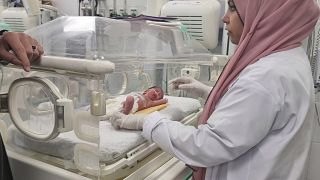
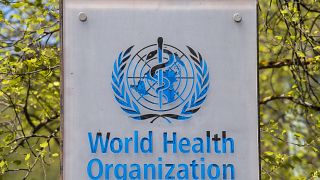
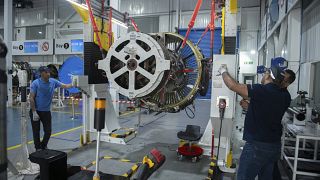
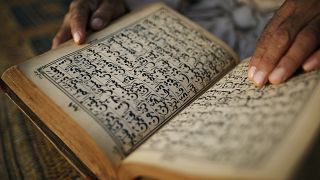
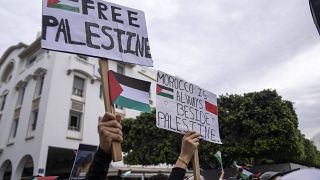

02:20
A tour at Dar es Salam's Village Museum
Go to video
Lesley Lokko: First African woman to win RIBA Royal Gold Medal for architecture
02:19
Burkina Faso: Francis Kéré receives 2024 Crystal Award for social change at WEF
02:27
Kenya's eco-friendly villa fit for British royalty
Go to video
Creating Sitopia: a city built around food
01:56
Rabat hosts 8th MOCA festival to promote Africa's cultural industry